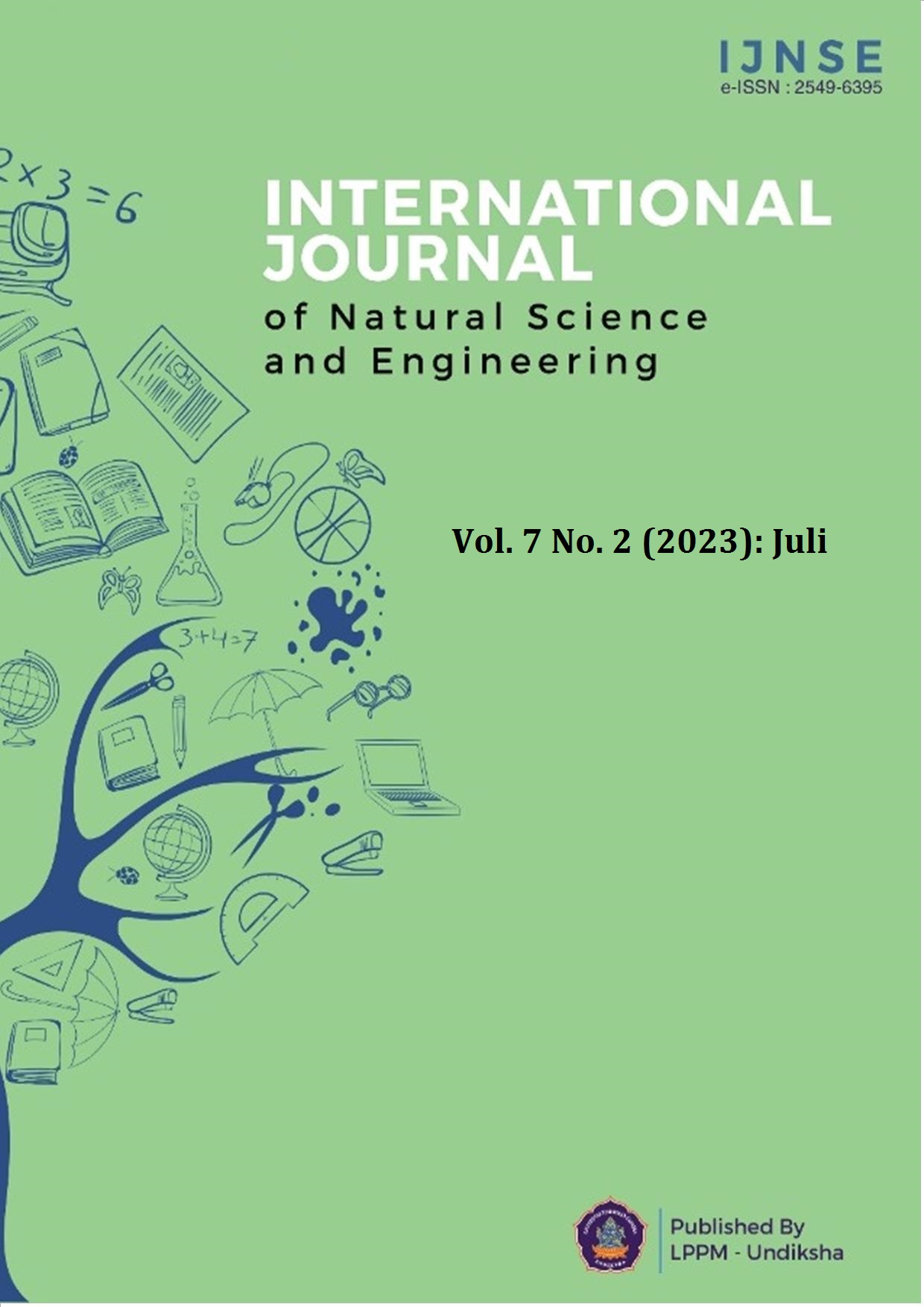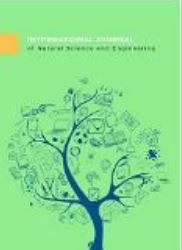The Relationship of Facial Skin Personal Hygiene to The Onset of Acne (Acne Vulgaris) in Adolescent Boys
DOI:
https://doi.org/10.23887/ijnse.v7i2.62085Keywords:
personal hygiene, facial skin, acne, teenage boysAbstract
Acne is a common problem that often occurs at a young age and is influenced by factors such as climate, hygiene, cosmetic use, age, race, diet, gender, and genetics. This research was conducted at SMAN 1 Pangkalan Koto involving 155 male students. Of these, 111 students (71%) experienced acne problems. The purpose of the study was to assess the relationship between facial skin hygiene (Personal Hygiene) with the incidence of acne vulgaris in adolescent boys at SMAN 1 Pangkalan Koto Baru. The research method used is correlation analytics with a cross-sectional design. The independent variable is personal hygiene, while the dependent variable is the incidence of acne vulgaris. The study sample consisted of male students who had acne vulgaris and met the research criteria. Primary and secondary data were collected through questionnaires. Data analysis was carried out by univariate and bivariate analysis methods. The results showed that around 51.6% of adolescent boys at SMAN 1 Pangkalan Koto Baru experienced moderate acne vulgaris. Their level of personal hygiene was also categorized as moderate, with 69.4% of respondents having a similar level of hygiene. The results of the analysis showed a significant relationship between facial skin hygiene and the incidence of acne vulgaris in adolescent boys at SMAN 1 Pangkalan Koto (Sig. Pearson Chi-Square: 0.021 < 0.05).
References
Adela, F., & Rosalina, L. (2022). Implementasi of The Covid-19 Health Protocol at Beauty Salons in Sangir District, Solok Selatan Regency. Jurnal Tata Rias Dan Kecantikan, 4(2), 91–101. https://doi.org/10.24036/jitrk.v4i2.104. DOI: https://doi.org/10.24036/jitrk.v4i2.104
Ali, E. Y., Soliman, F. E. S., & Maklad, S. A. (2022). The Effect of Acne Vulgaris on Body Image Satisfaction, Self Esteem and Quality of Life of Adolescents at Tanta city. Tanta Scientific Nursing Journal, 27(4), 188–206. https://doi.org/10.21608/TSNJ.2022.267578. DOI: https://doi.org/10.21608/tsnj.2022.267578
De Pessemier, B., Grine, L., Debaere, M., Maes, A., Paetzold, B., & Callewaert, C. (2021). Gut–skin axis: current knowledge of the interrelationship between microbial dysbiosis and skin conditions. Microorganisms, 9(2), 353. https://doi.org/10.3390/microorganisms9020353. DOI: https://doi.org/10.3390/microorganisms9020353
El-Tonsy, T. M. K., Mohammed, M. A., Hamed, Y. A. E. E., & Tawfik, S. H. (2018). Bacteriological study of acne vulgaris in Cairo Egypt. The Egyptian Journal of Hospital Medicine, 72(9), 5203–5209. https://doi.org/10.21608/EJHM.2018.10742. DOI: https://doi.org/10.21608/ejhm.2018.10742
Handayani, F., & Minerva, P. (2021). Penerapan Protokol Kesehatan Covid-19 Pada Salon Kecantikan di Kecamatan Kinali Kabupaten Pasaman Barat. Jurnal Pendidikan Tambusai, 5(3), 7604–7610. https://doi.org/10.31004/jptam.v5i3.2157.
Haque, S. E., Rahman, M., Itsuko, K., Mutahara, M., & Sakisaka, K. (2014). The effect of a school-based educational intervention on menstrual health: an intervention study among adolescent girls in Bangladesh. BMJ Open, 4(7). https://doi.org/10.1136/bmjopen-2013-004607. DOI: https://doi.org/10.1136/bmjopen-2013-004607
Hennegan, J., & Montgomery, P. (2016). Do menstrual hygiene management interventions improve education and psychosocial outcomes for women and girls in low and middle income countries? A systematic review. PloS One, 11(2). https://doi.org/10.1371/journal.pone.0146985. DOI: https://doi.org/10.1371/journal.pone.0146985
Khansa, M., Supiani, T., & Ambarwati, N. S. S. (2019). Jagung sebagai Masker Terhadap Kesehatan Kulit Wajah Kering Secara Alami. Jurnal Tata Rias, 9(2), 32–41. https://doi.org/10.21009/9.2.4.2009. DOI: https://doi.org/10.21009/9.2.4.2009
Luthfa, I., & Nikmah, S. A. (2019). Perilaku Hidup Menentukan Kejadian Skabies. Jurnal Ilmiah Permas: Jurnal Ilmiah STIKES Kendal, 9(1), 35–41. https://doi.org/10.32583/pskm.9.1.2019.35-41. DOI: https://doi.org/10.32583/pskm.9.1.2019.35-41
Lynn, D. D., Umari, T., Dunnick, C. A., & Dellavalle, R. P. (2016). The epidemiology of acne vulgaris in late adolescence. Adolescent Health, Medicine and Therapeutics, 7, 13–25. https://doi.org/10.2147/AHMT.S55832. DOI: https://doi.org/10.2147/AHMT.S55832
Marga, M. P. (2020). The Personal Hygiene Impact on the Incidence of Scabies. Jurnal Ilmiah Kesehatan Sandi Husada, 9(2), 773–778. https://doi.org/10.35816/jiskh.v12i2.402. DOI: https://doi.org/10.35816/jiskh.v12i2.402
Marwiyah, M., & Pertiwi, M. K. (2019). Masker Daun Kelor, Daun Salam, dan Tepung Garut untuk Mengurangi Jerawat pada Wajah. TEKNOBUGA: Jurnal Teknologi Busana Dan Boga, 7(1), 39–45. https://doi.org/10.15294/teknobuga.v7i1.19551.
Mijaljica, D., Spada, F., & Harrison, I. P. (2022). Skin cleansing without or with compromise: soaps and syndets. Molecules, 27(6), 2010. https://doi.org/10.3390/molecules27062010. DOI: https://doi.org/10.3390/molecules27062010
Mutiara, S. (2019). Pengaruh penggunaan kosmetik skin care terhadap timbulnya acne vulgaris pada siswa kecantikan Smkn 6 dan Smn 7 Padang. Jurnal Pendidikan Dan Keluarga, 10(2), 228–234. https://doi.org/10.24036/jpk/vol10-iss2/544. DOI: https://doi.org/10.24036/jpk/vol10-iss2/544
Okoro, E. O., Ogunbiyi, A. O., George, A. O., & Subulade, M. O. (2016). Association of diet with acne vulgaris among adolescents in Ibadan, southwest Nigeria. International Journal of Dermatology, 55(9), 982–988. https://doi.org/10.1111/ijd.13166. DOI: https://doi.org/10.1111/ijd.13166
Pane, J., Pakpahan, R., & Nadeak, S. (2022). An Overview of Young Women’s Knowledge of Menstrual Personal Hygiene. Indonesian Journal of Global Health Research, 4(4), 921–928. https://doi.org/10.37287/ijghr.v4i4.1398.
Pangestu, R., Sani, N., Febriyani, A., & Panonsih, R. N. (2021). Menstrual Pattern with Acne Vulgaris Incidence in Vocational High School Students. Jurnal Ilmiah Kesehatan Sandi Husada, 10(2), 664–670. https://doi.org/10.35816/jiskh.v10i2.675. DOI: https://doi.org/10.35816/jiskh.v10i2.675
Prima, M. S. (2018). Hubungan kebersihan kulit wajah dengan timbulnya akne vulgaris pada siswa tata kecantikan di kota padang. Jurnal Pendidikan Dan Keluarga, 10(2), 167–173. https://doi.org/10.24036/jpk/vol10-iss2/528. DOI: https://doi.org/10.24036/jpk/vol10-iss2/528
Purnama, N. L. A. (2021). Pengetahuan Dan Tindakan Personal Hygiene Saat Menstruasi Pada Remaja. Jurnal Keperawatan, 10(1), 61–66. https://doi.org/10.47560/kep.v10i1.264. DOI: https://doi.org/10.47560/kep.v10i1.264
Putra, I. P. I. A., & Winaya, K. K. (2018). Pengaruh personal hygiene terhadap timbulnya akne vulgaris pada mahasiswa Program Studi Pendidikan Dokter angkatan 2014 di Fakultas Kedokteran Universitas Udayana. Intisari Sains Medis, 9(2). https://doi.org/10.15562/ism.v9i2.258. DOI: https://doi.org/10.15562/ism.v9i2.258
Ramadhanty, R. P., & Hamid, A. Y. S. (2021). Bo.y image perception is related to self-esteem of the adolescents with acne vulgaris. Enfermería Clínica, 31, S326–S329. https://doi.org/10.1016/j.enfcli.2020.09.021. DOI: https://doi.org/10.1016/j.enfcli.2020.09.021
Rosidah, L. K. U. (2018). Gambaran Pengetahuan Remaja Putri Kelas VIIA dan B Tentang Personal Hygiene di SMPN 2 Mojo Kabupaten Kediri. Jurnal Kebidanan, 7(2), 84–90. https://doi.org/10.35890/jkdh.v7i2.99. DOI: https://doi.org/10.35890/jkdh.v7i2.99
Sharma, R. K., Dogra, S., Singh, A., & Kanwar, A. J. (2017). Epidemiological patterns of acne vulgaris among adolescents in North India: a cross-sectional study and brief review of literature. Indian Journal of Paediatric Dermatology, 18(3), 196–201. https://doi.org/10.4103/ijpd.IJPD_82_16. DOI: https://doi.org/10.4103/ijpd.IJPD_82_16
Siregar, E. D. U., Ramona, F., & Dewi, L. M. (2017). Hubungan Antara Kelainan Siklus Menstruasi Dengan Kejadian Akne Vulgaris Pada Santriwati Sma Islam Terpadu Nur Hidayah Kartasura. Biomedika, 8(2). https://doi.org/10.23917/biomedika.v8i2.2912. DOI: https://doi.org/10.23917/biomedika.v8i2.2912
Suppiah, T. S. S., Sundram, T. K. M., Tan, E. S. S., Lee, C. K., Bustami, N. A., & Tan, C. K. (2018). Acne vulgaris and its association with dietary intake: a Malaysian perspective. Asia Pacific Journal of Clinical Nutrition, 27(5), 1141–1145. https://doi.org/10.3316/ielapa.898660961352787.
Syahputra, A., Anggreni, S., Handayani, D. Y., & Rahmadhani, M. (2021). Pengaruh makanan akibat timbulnya acne vulgaris (jerawat) pada mahasiswa mahasiswi fk uisu tahun 2020. Jurnal Kedokteran STM (Sains Dan Teknologi Medik), 4(2), 75–82. https://doi.org/10.30743/stm.v4i2.62. DOI: https://doi.org/10.30743/stm.v4i2.62
Tuchayi, S. M., Makrantonaki, E., Ganceviciene, R., Dessinioti, C., Feldman, S. R., & Zouboulis, C. C. (2015). Acne vulgaris. Nature Reviews Disease Primers, 1(1), 1–20. https://doi.org/10.1038/nrdp.2015.29. DOI: https://doi.org/10.1038/nrdp.2015.29
Ulfah, N. (2020). Hubungan paparan kosmetik dengan kejadian akne vulgaris pada mahasiswi fakultas kedokteran. Jurnal Health Sains, 1(6), 393–400. https://doi.org/10.46799/jhs.v1i6.59. DOI: https://doi.org/10.46799/jhs.v1i6.59
Wulandari, R., Pravitasari, D. N., Indradi, R., & Putri, A. N. (2022). Analisis Faktor Risiko Akne Vulgaris Pada Pelajar. CoMPHI Journal: Community Medicine and Public Health of Indonesia Journal, 3(2), 122–129. https://doi.org/10.37148/comphijournal.v3i2.110. DOI: https://doi.org/10.37148/comphijournal.v3i2.110
Zanin, L. M., da Cunha, D. T., de Rosso, V. V., Capriles, V. D., & Stedefeldt, E. (2017). Knowledge, attitudes and practices of food handlers in food safety: An integrative review. Food Research International, 100, 53–62. https://doi.org/10.1016/j.foodres.2017.07.042. DOI: https://doi.org/10.1016/j.foodres.2017.07.042





